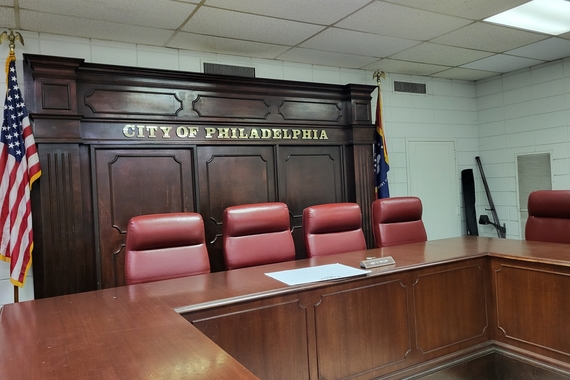MLK Immersion Day 4: Montgomery, Alabama
Video of Montgomery activities by Calli Hadler
MONTGOMERY, Ala. - After a day in Birmingham, Ala., students with the University of Minnesota’s MLK 3000 course visited the Legacy Museum and National Memorial for Peace and Justice on Wednesday.
The museum and memorial, along with Freedom Monument Sculpture Park, are part of the Equal Justice Initiative’s Legacy Sites, which aim to educate about the brutal realities of racism, slavery, segregation and mass incarcerations.
The class saw a glimpse of the heavy content of the museum outside as they passed by a fountain depicting three Black people immersed up to their shoulders in water. This fountain commemorates the thousands of people lynched between 1865 and 1950, as well as the unknown amount of undocumented lynchings.

Tarran Austin, a first-year student with the class, was aware of the disturbing but important content of the museum even before entering.
“We’re going to see some fucked up shit,” Austin said.
Within the museum itself, students saw more disturbing aspects of topics they had previously learned about, such as the estimated two million Africans who died as American colonists transported them back to America for slavery, represented by a sandy underwater dune with the heads of hundreds of Africans of all different ages and genders with facial expressions varying from solemnity to showing facial reactions of pure agony.
Alexis Cochran-Starr, a fourth-year student on the trip, said it made her reflect on her own ancestors’ journeys.
“Just seeing a visual representation of that was really hard,” said Cochran-Starr. “It reminds you that our ancestors are the ones who did make it and not everybody’s did, and some people’s lineages ended there.”
She appreciated the memorial for bringing the presence of the enslaved whose lives will remain unknown.
The next portion of the museum showed the struggles of the enslaved who did survive the trip across the Atlantic, trapped in cages, sold like items out of a catalog and being separated from their families most likely forever.
The museum portrayed the significant amount of struggles still faced by those formerly enslaved after the abolition of slavery with the passage of the 13th Amendment.
A quote from former Mississippi Gov. Adelbert Ames portrays what a large part of America thought about Black people even after slavery was abolished.
“They are to be returned to a condition of serfdom," Ames said in October, 1875. “A second slavery.”
Even as legislation slowly passed to grant Black people the rights they deserve, opposition was quick to follow. After Brown v. Board of Education of Topeka, a 1954 Supreme Court Case that declared segregated schools unconstitutional, there were school districts that opted to close rather than accept Black students.
Between the years of 1865 and 1950, there were over 6,000 documented cases of lynchings. The museum highlighted the stories of many lynched Black people, though given the lack of documentation, it was difficult to tell the in-depth stories of every single lynched Black person.
Even after the Civil Rights Movement, Black people suffered the effects of internalized racism in society, especially in legislation.
Zacharius Khan, a first-year student in the class, said one of his primary takeaways was legislation against Black people, primarily former President Richard Nixon’s war on drugs, which resulted in Black people disproportionately imprisoned and prevented from voting.
“Literally a high ranking member of our government openly admitting that certain policies are being made to discriminate against people,” Khan said. “It doesn’t matter how people view racism in this country. It still exists regardless of how transparent it is or not.”
Just before the final gallery of the museum was the reflection room, a beautiful hulking bronze room lined with important figures in Black history to give museum-goers a calm space to think after the difficult content previously in the museum.
The final stop for the class before it departed for Jackson, Miss., was the National Memorial for Peace and Justice, a park dedicated to honoring the thousands of Black people killed in lynchings.
The main monument consisted of 805 large steel beams engraved with a county and the names of all the documented people lynched in the county.

Cochran-Starr connected these monuments back to stories told in the museum.
“To sit down and hear people’s stories that are real and have these visual representations sitting in front of you,” Cochran-Starr said. “All of their stories are different, but they all stem from the same brutal past of slavery.”
By Alec Zadra



